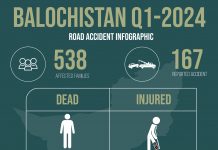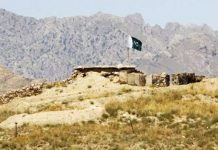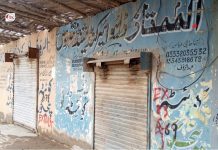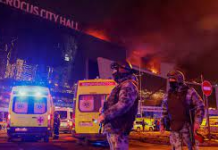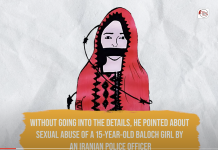Students for a Free Tibet (SFT)
Author: Ruzn Baloch
Youth has always played an important role in the revolutionary struggles of past, and continue to do so today as well. Involvement in politics leads a student toward an active participation in political ruffles and fiscal crisis in the country. It’s either Latin America or Africa; students have been in front ranks of any struggle to defend their sovereignty.
Tibet is an autonomous region of China, which is also called as the “Roof of the World” because it shares Mt. Everest with Nepal. But, Tibetan claims that Tibet is an independent state, which is currently under the illegal occupation of China.
In 1912, the 13th Dalai Lama, Tibet’s political and spiritual leader, issued a proclamation reaffirming Tibet’s independence, and the country maintained its own national flag, currency, stamps, passports and army. Dalai Lama further said; “China and Tibet are two different nations, their relation is just based on religion.” Before 1912, Tibet was under the Qing dynasty’s rule from 1720 to 1912. During the Qing rule of Tibet, the region was structurally, militarily and administratively controlled by the Qing dynasty.
In 1950, the newly established Communist regime in China entered in Tibetan borders and invaded Tibet. Today, Tibet is under Chinese occupation. The Chinese government justifies its occupation by claiming: “Old Tibet was backward and needed China to liberate it”. But all these are political tactics; either it’s Mao’s China or Union of Soviet Socialist Republicans (USSR), each preferred their own national interests first, and contemplated for others then.
The struggle for a Free Tibet has always continued and students have played a pivotal role in it. One organisation, Students-for-Free-Tibet (SFT) works in solidarity with the Tibetan people in their struggle for freedom and independence.
Students-for-Free-Tibet (SFT) was founded in New York City in 1994 by a group of Tibetans, young students and supporters. The concept of SFT was adopted from the understanding of the critical role of students and youth who had played historical role in freedom struggles throughout the world history.
Since then, SFT has grown into an international network of students and non-students in more than 35 countries. Today, they have more than 650 high school, university and community chapters and one full-time office in New York City. There are few satellite offices and organizing hubs; SFT Canada has an office in Toronto, SFT India has an office in Dharmsala and SFT UK has an office in London. They work in solidarity with the Tibetan people in their struggle for freedom and independence. Their role is to empower and train youth as leaders in the worldwide movement for social justice. They believe every individual has the right to be free. Those who enjoy freedom have power and responsibility to make positive changes in the world.
Interestingly, SFT’s leading leap is under women. Today, Pema Yoko is the acting executive director of SFT and National Network Leaders are: Tenzin Tselha, National Director SFT-India; Sonam Chokey, National Director SFT-Canada; Ellen Lees, National Director SFT-UK.
SFT has vividly spoken up about membership, finance, officers (leadership) and amendments in the preamble of its constitution. Membership of SFT is open to students of all grades, and funds of SFT are used to bring in speakers and activists advocating for the rights of the Tibetan people.
SFT achieved many goals and became most famous political organization in world. In 1996, SFT participated in the first Tibetan freedom concert in San Francisco, which drew the attention of over 100,000 people towards the Tibetan cause. In 1998, SFT organized high-profile demonstrations across North America during the visits of then Premier Zhu Rongji and President Jiang Zemin of China. In 2001, SFT organized public gatherings, entitled “Mobilization for Tibet”, which marked as ‘a week of powerful demonstrations and civil disobedience’, just prior to the President Bush’s first-ever visit to China, in Washington DC to draw attention towards the Tibet issue. In 2005, SFT began a worldwide campaign targeting the Canadian Corporation Bombardier for supplying the Chinese government with specialized technology needed to build a rail link connecting Tibet with China.
By partnering the Chinese government on the construction of the railway, SFT claimed that Bombardier has made themselves a partner in the occupation of Tibet by China. On July 1, 2006, the inauguration of the Gormo Lhasa Railway-3, Free Tibet Activists unfurled a banner over the Beijing railway station, which read: “China’s Tibet Railway, Designed to Destroy.”
In San Francisco in 2008, SFT activists captured the world’s attention with a daring action when they climbed the cables of the Golden Gate Bridge and unfurled a massive banner proclaiming China’s official Olympics slogan, “One World, One Dream”, and another banner with their answer, “Free Tibet.”
The dramatic action made global headlines and news footage were broadcast live worldwide. At least two Olympic torchbearers made bold statements in support of Tibet during their run with the torch. In January 2011, SFT and other US-based Tibetan organizations held a three-day protest in Washington. DC as Chinese President Hu Jintao made his first official state visit.
SFT used #TibetFlagChallenge as a social media campaign which went viral with participants from at least 48 cities in 18 countries who had shown the Tibetan flag in their own unique ways. This challenge was introduced in the commemoration of the third annual Tibetan Independence Day on February 13, 2015.
The flag, which is banned in Tibet and China, is an enduring symbol of the Tibetan people’s struggle for freedom and independence, and through the #TibetFlagChallenge participants were able to secure this symbol in their efforts to shape their future for a free Tibet.
On October 15, 2016, despite heavy security, SFT-India successfully parachuted a giant banner reading “Free Tibet” on the popular Western Coast of Goa, where the BRICS Summit was being held and attended by Chinese President Xi Jinping. This action made “Tibet” a media focus.
On Press Freedom Day, SFT registered a report at Amnesty International against China for abducting Tibetan writers and intellectuals.
Khenpo Kartse, a respected religious teacher who was abducted in 2013 by Chinese forces, was released due to efforts and protests of SFT that pressurized china to release Khenpo, after spending two and a half years in prison.
Every nation has a civil identity which tells that a nation is different from other, and every nation has the right to have a democratic and secular state. Struggle for Free Tibet will be continued till the day when Tibetan gets its sovereignty back.
Baloch students and the Baloch struggle has lot to learn from the struggle of Tibetans and the SFT.
Disclaimer: The views and opinions expressed in this article are those of the author and do not necessarily reflect the official policy or position of The Balochistan Post or any of its editors.

